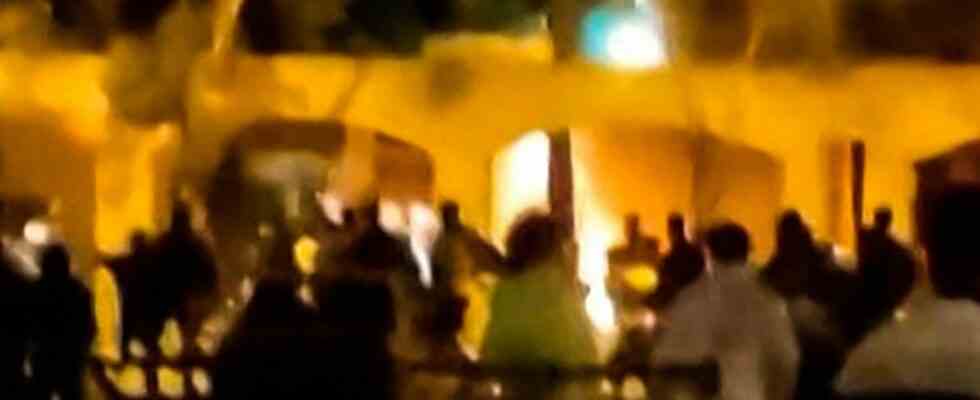The unrest in Iran has apparently reached a new high. Videos posted on social media on Friday afternoon allegedly show a fire in the former home of the founder of the Islamic Republic of Iran, Ayatollah Ruhollah Khomeini. According to the recordings and reports, demonstrators critical of the regime set fire to the building that serves as a museum in Khomeini’s birthplace Khomeini, the Reuters news agency reported. She wrote that she identified the house based on its architecture and location. So far, however, this has not been independently verified for the Süddeutsche Zeitung.
The videos cited by Reuters and other media showed dozens of people in front of the building. They cheered as flames appeared there. It was also not possible to independently verify when the videos were recorded. If the historic building was really set on fire, this would have to be considered sacrilege in the eyes of the regime: Ayatollah Roholla Khomeini, as a Shiite imam, is revered as a saint by government supporters and the pious section of the Iranian population.
Official source says: “The report is a lie”
The Iranian news agency Tasnim, one of the mouthpieces of the Tehran mullahs’ regime, denied on Friday that the building used as a museum was on fire: “The report is a lie.” Tasnim said: “The doors of the house of the late founder of the great revolution are open to the public.”
It was also unclear when the fire is said to have started. The government-critical network 1500Tasvir announced that the incident had already occurred on Thursday evening. Khomeini, the leader of the so-called Islamic Revolution of 1978, died in Tehran in 1989. His former home in Chomein, south of the capital, was then turned into a museum.
If Khomeini’s house is actually on fire, it could provoke an even harsher response from the regime to the protests that have been going on since September 16. The riots broke out after the Kurdish Mahsa Amini was arrested by the Morality Police in Tehran because her headscarf was said to be wrong. The 22-year-old was apparently severely beaten by the so-called moral guards. She collapsed in the police station and died in hospital three days later. Authorities spoke of heart failure, but there is evidence that death was caused by head and brain injuries as a result of police violence. The family of the dead also repeatedly denied that Mahsa Amini had suffered from an illness.
The nationwide unrest that broke out after the young woman’s death, which in the eyes of many Iranian opposition figures at home and abroad represents something of a real revolution against the Islamist mullah regime, quickly spread across the country. They were led by young women who publicly tore off their headscarves as a symbol of the call for individual freedom. The young women have been joined by other parts of the population across society and across the country.
Around 350 people are said to have been killed
In this way, in addition to the oppression of women and the lack of many personal freedoms, the bad economic situation, the ubiquitous corruption and other abuses in Iran became the subject of the protests. However, many observers doubt whether these unrests really have the force to overthrow the theocratic system that has been in power for 40 years.
The security forces are using great force at the direction of Khomeini’s successor as spiritual leader, Ayatollah Ali Khameniei. Police and militiamen also fired live ammunition, and several people were beaten to death, including very young women. Around 350 people are said to have been killed, including some security forces. The judiciary has announced tough action and courts have already handed down the first death sentences on demonstrators.
The unrest is particularly violent in the provinces of Iran where ethnic and religious minorities live. According to the Tasvir network, the most recent videos show demonstrators in several cities in the provinces of Sistan and Balochistan, where Sunnis live. In their capital, Sahedan, people chanted the cry “Tod Khamenei.” In Chabahar, protesters removed and trampled on the street sign of an avenue named after Khomeini. However, the Reuters agency was not able to independently verify the authenticity of these recordings either.

